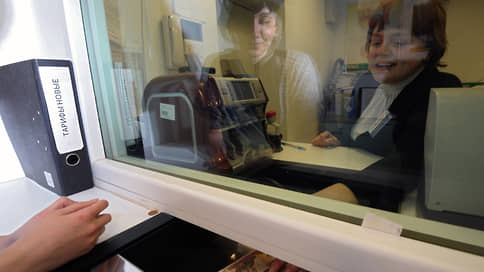The ruble supported cross-border transfers
[ad_1]

According to the Central Bank, the transfer of funds abroad by Russian citizens decreased sharply in 2023 compared to the end of 2022, but in the second half of the year the flow stabilized at $4.7 billion per quarter. By the end of the year, ruble transfers even showed some growth after the spring dip. Moreover, individuals transfer Russian currency not only to friendly, but also to unfriendly countries. Experts attribute the initial drop in cross-border cash flows, among other things, to a “decrease in relocant activity,” and the stabilization at the end of the year to the “building up of parallel import schemes.”
For the first time since the beginning of 2022, the Bank of Russia published data on cross-border transfers by Russian citizens. The Central Bank emphasizes that for their analysis it uses the indicator of net transfers of resident individuals, “since it most correctly reflects the trend in the outflow of funds from Russia, and to a lesser extent the indicator of transfers of labor migrants.”
According to the regulator, foreign currency transfers from Russians in the first quarter of 2023 fell by almost half compared to the fourth quarter of 2022, when they were at the highest level in history – from $20.4 billion to $11.1 billion. After that, the volume gradually decreased and stabilized in the second half of 2023 at $4.7 billion per quarter.
Transfers in dollars in the fourth quarter of last year fell by more than six times, in euros – more than three times, in Japanese yens – by half.
As noted in the Bank of Russia’s material, the main purposes of currency transfers in the fourth quarter of 2023 were transfers of own funds and transfers between close relatives (62%), as well as payments for goods (14%). At the same time, the share of friendly countries decreased slightly – by 4.5 percentage points, to 63.8%. However, as the regulator notes, “in general, since the third quarter of 2022, it has remained stable in the range of 60–68%.”
Ruble cross-border transfers, in contrast to foreign currency transfers, decreased sharply in the second quarter of 2023 – from 404 billion to 227 billion rubles. But then they began to recover, surpassing the level of 300 billion rubles in the fourth quarter.
According to the Bank of Russia, the main purposes of ruble transfers, as in the case of foreign currency, were transfers of own funds and transfers between close relatives.
However, the ratio is significantly more biased in favor of transfers – 89.1% versus 3.7%. “In general, ruble transfers from individuals are associated primarily with imports and payments by Russians for foreign purchases,” the Central Bank believes.
One of the most unexpected observations was that the volumes and shares of ruble transfers to unfriendly countries were at a fairly high level – more than 466 billion rubles. over the past year, or 38% of the total. Experts could not guess to which unfriendly countries Russian banks made transfers in Russian currency. Vice-President of the Association of Russian Banks Alexey Voylukov only noted that the volume of ruble transfers to unfriendly countries grew confidently from the first quarter of 2022 to the first quarter of 2023 and even exceeded the volume of transfers to friendly countries. In subsequent periods, they decreased significantly, while transfers to friendly countries in rubles had a steady upward trend, he says.
“In yen, a large volume of transfers can be associated with business in the Far East, including parallel import of goods for the purpose of resale, and the overall growth is associated with the gradual establishment of parallel import schemes and delivery of goods by shuttle traders,” says Alexey Voylukov. As Gennady Fofanov, president of the Invoicecafe investment platform, notes, the active transfer of yen can be explained by the purchase of used cars from Japan, interest in which has grown due to sales restrictions in the Russian Federation, “but due to new bans from the Japanese authorities, these statistics may worsen.”
According to Mr. Fofanov, the sharp decrease in the total volume of transfers both in rubles and in foreign currency could be due to “a decrease in the activity of relocants who left the country en masse in 2022.”
[ad_2]
Source link





